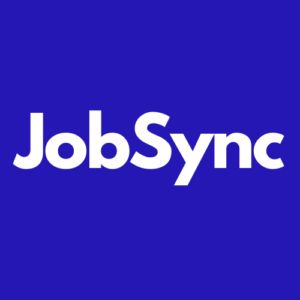
The Recruiter Experience: Best Practices
In the February installment of our roundtable we asked Madeline Laurano if the recruiter experience still matters. Chiming in, Tim Sackett responded, “Not as much as last year…recruiters are going to be in a lot of pain over the next few months.”
And, with that, we all took a deep breath, cameras on and mics hot, and dove into a one hour discussion about the recruiter experience.
How do recruiters hit their ultimate goal?
With all the recruiting metrics floating around, the only goal that really matters is, “Did we make the hires we needed to make?” Cost per hire, application volume, days to fill, NPS, conversion rates – nothing matters as much as the answer to the question, “Did we make the hires we needed to make?”
Complicating the recruiter experience is a continuous inference and persistent undercurrent that what recruiters do ‘isn’t that hard’ and that ‘anyone can be a recruiter’. As leaders of talent, it is your responsibility to offer support and defend the good, and hard work, your recruitment teams do in order to keep them motivated amidst the ongoing market uncertainties.
1. Validate the experience
People in your company don’t know what your recruiters do. The talent team is very often an unrecognized and undervalued part of corporate structure. In many organizations the “People” people are not considered essential or even skilled. What talent acquisition does, and specifically what recruiters do for their organizations, is often misunderstood. Investing the time and effort it takes to make certain that everyone in the organization understands that hiring the right people is foundational to organizational success is a necessity. To do this, you must prove not just the importance of talent acquisition, but the skill involved. Recruiters are human, two-sided marketplaces, with hiring teams and candidates on both sides.
2. Systems and tools
Many of the critical pieces of the HR tech stack are not built with the recruiter experience in mind. For the majority of employers, the Applicant Tracking System (ATS) is out to solve two critical areas: compliance and data integrity, neither of which is designed for the recruiter to optimize the hiring process.
“It’s time to rethink the tech stack to cater to the recruiter experience.” – Madeline Laurano
Before you consider adding new tech though, outline the problem you need solved. Most recruiting teams are not technical by nature and recruiting technology companies have gotten extremely good at selling flashy features . If it works well as an independent system, but creates a tremendous amount of work on the part of the recruiter to solve the problem, have you really solved it or just replaced one problem with a new problem? A lot of the systems that hiring teams use (CRM, ATS, Google Sheets) that are meant to help the hiring experience, end up hindering the recruiter workflow because they do not integrate together well (if at all) and in turn, cause a lot of unnecessary manual work on the recruiter part.
3. Let them focus on the ‘real’ work.
“What recruiters want to do is have conversations with talent…but we put all this other crap on them and they don’t have enough time to do that.” – Tim Sackett
According to a research study with Talent Board, 61% of recruiters are doing 6 or more hours of manual work every week. That is valuable time that you recruiters could be using toward growing your organization.
Recruiters are forced to devote a considerable amount of time compensating for deficiencies in the systems they use. These deficiencies can range from ATSs selected and implemented by not the recruiting department to poorly written and executed legislation and regulations, to arduous process due to legal or corporate structural components. . As a result, recruiters have to allocate more time to ensure all the necessary boxes are checked, gather data, and input information into various systems. This hinders them from focusing on the crucial task of locating and persuading top talent to join the organization.
4. Break up recruiting into various specialized roles
In the past few years, we have seen the rise of employment branding, recruitment marketing, and recruiting analytics roles within the talent attraction function. Much like many employers recognized years ago that recruiters needs to be specialized: from high volume recruiting to executive recruiting, college recruiting and technical recruiting, and even peeling away sourcing, employers has begun the process to expand the roles to separate off many of the support roles that require a specialized set of skills in order to maximize the business’s ability to hire top talent.
Over the years, increasingly specialized roles in and around the HR and talent teams have emerged. HRIS managers are generally accepted as a separate role and often even sit outside of Talent Acquisition (TA). The emergence of employer branding specialists, recruitment marketing and talent analytics really put a spotlight on the need for different skill sets within the team to build an efficient talent engine. However, the most recent addition to the TA team may be the most influential – recruiting operations. This role emphasizes analysis, technical skills, and results, with the goal of identifying and addressing issues that, when resolved, can yield significant gains in efficiency for the TA group.
What is a recruiting operations team?
You cannot ask a recruiter that has 25+ open requisitions to take on more requisitions, do a little branding on the side, download and upload files into the CRM, manually post jobs on Indeed, and then copy and past responses back into the ATS. Employers have to do more to get recruiters their time back. For many employers it’s a simple answer, build a recruiting operations function.
Recruiting operations responsibilities:
Recruiting operations, done right, not only gives recruiters the chance to spend their time recruiting, it should accelerate your company’s ability to go from job to hire. Over time, that means you will need to continually adjust your recruitment success metrics as you find opportunities to make your dollars, time, and recruitment skills go further.
The biggest challenge facing recruiting teams this year is news cycle after news cycle of layoffs, adding incrementally more people into the available workforce, leaving executive teams both nervous about adding functional roles while also expecting that recruiting has gotten much easier.
Despite the passage of time, the truth remains that recruiting remains just as challenging today as it was 6, 12, or 18 months ago. With the post-pandemic workforce now in control of their work arrangements and location, recruiters find themselves lacking the necessary resources, budget, and manpower to compete for top talent. Their arsenal of tools, empathy, and support has also dwindled in comparison to what they had a mere year ago. As a result, the recruiter experience still has a lot of room for improvement and employers willing to make that investment will find that not only will you have happier and more productive recruiters, they in turn, will provide better candidate experiences.


